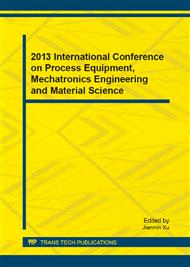p.271
p.277
p.281
p.286
p.290
p.294
p.299
p.303
p.307
Robot Grasp Pattern Recognition Based on Wavlet and BP Neural Network
Abstract:
Tactile sensation is one of essential perceptions for a functional robot hand to monitor slip states, grasp objects with proper force, and distinguish different properties of objects etc. A practical tactile sensor based on acoustic-electric converting principle is introduced. The grasp signals of objects of three sort materials are collected by the tactile sensor. The power spectrum feature vectors of them are taken as learning sample book set. Transfer function of neurons in hidden layer is tangent function and that in output layer is logarithmic function. L-M algorithm is selected and convergence precision set is as 0.0001. The hidden layer nodes are taken by experiments as 13. When neural network structure is 8-13-4, BP neural network has the fastest convergence rate and short running time of milliseconds.
Info:
Periodical:
Pages:
290-293
Citation:
Online since:
July 2013
Authors:
Keywords:
Price:
Сopyright:
© 2013 Trans Tech Publications Ltd. All Rights Reserved
Share:
Citation:


